




Local History Week
Celebrating Blackpool Tower’s 125th anniversary

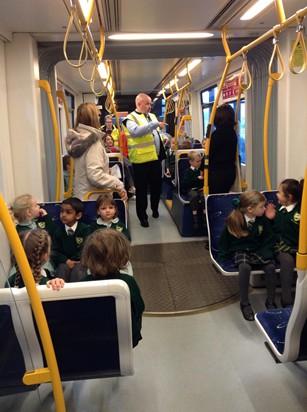
Talk from Showtown Visit to Blackpool Tower
Finding out about the Illuminations and Blackpool trams
The Early Years Foundation Stage Curriculum supports children’s understanding of History through the planning and teaching of ‘Understanding the World’. This aspect is about how children find out about past and present events in their own lives, their families and other people they know. Children are encouraged to develop a sense of change over time and are given opportunities to differentiate between past and present by observing routines throughout the day, growing plants, observing the passing of seasons and time and looking at photographs of their life and of others. Practitioners encourage investigative behaviour and raise questions such as, ‘What do you think?', ‘What could it be used for?' and ‘How might it work?' Use of language relating to time is used in daily routines and conversations with children.



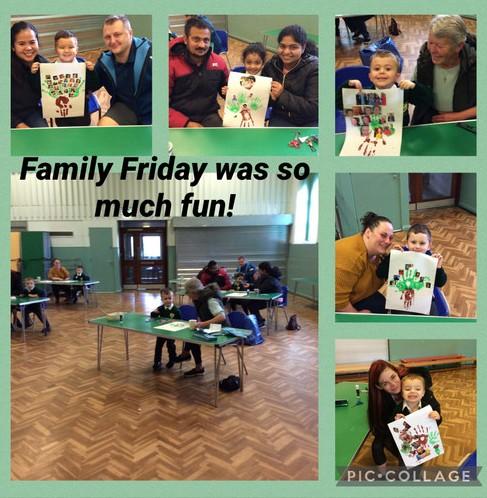




St. Kentigern’s Curriculum: History
The Royal Family Historical Heroes R European History: Romans Me and My World: Families Farming My Family History Great Inventions –Planes, Trains and Trams The Greatest Explorers Local History Seaside Bonfire Night Great Fire of London African History: Ancient Egypt European History: Prehistoric Britain: Stoneage Local History: European History: Anglo Saxons European History: Viking Age R Year 1 Year 2 Year 3 Year 4 Year 5 North American History: Ancient Maya Journeys
History The Impact of War on Blackpool Crime and Punishment Year 6 European History: Ancient Greeks Bronze and Iron age
Local
World History Timeline covering all of the specified civilisations on the 2014 National Curriculum.
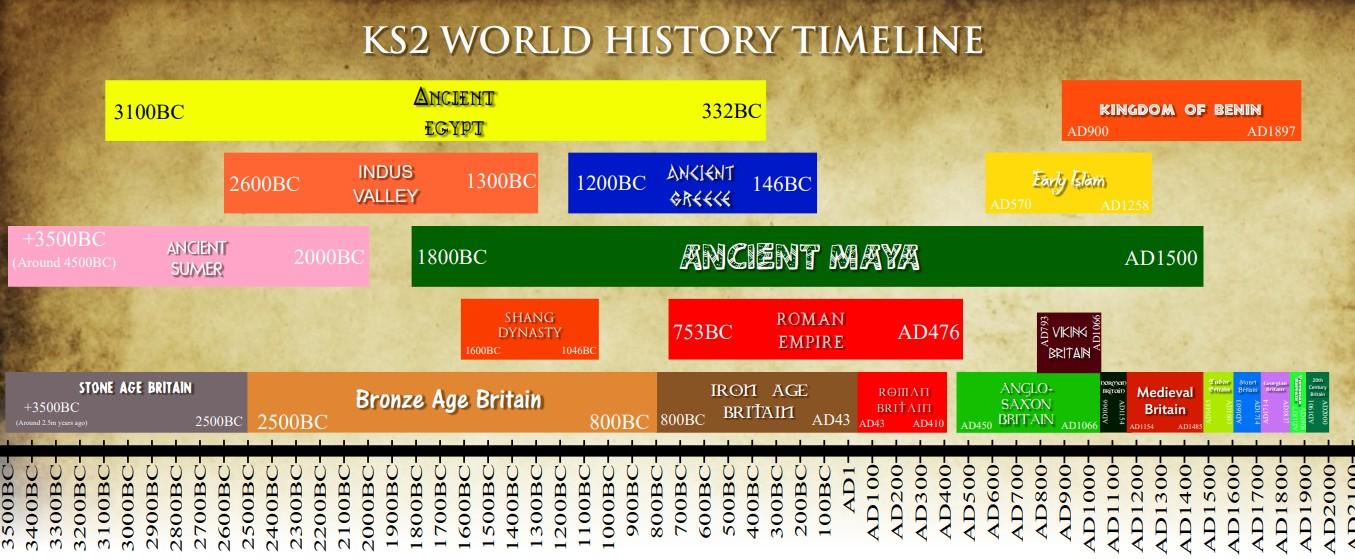
Roman Britain AD43 - 410
Anglo-Saxon Britain 450 – 1066 Viking Britain 793-1066
Norman Britain 1066 - 1154
Medieval Britain 1154 - 1485
Tudor Britain 1485 - 1603

Y3 Y3 Y3 Y4 Y4 Y5 Y5 Y6 Y6 Y6
Stuart
Georgian
Victorian
1901
1901-1914) 20th Century Britain
Britain 1603 - 1714
Britain 1714 - 1837
Britain 1837 -
(Edwardian
Rising Stars History is a complete curriculum programme for primary history which provides 18 half termly units of work to ensure pupils gain a coherent knowledge and understanding of Britain’s history, their locality and the history of the wider world. It offers complete coverage of the National Curriculum Programme of Study for History (2014) and supports meeting the criteria of the new Ofsted Education Inspection Framework (2019). From starting points suitable for all, the units develop to provide appropriate challenges for KS1 and KS2 pupils of varying abilities. The units have key questions to develop the use of historical enquiry, as well as a focus on the acquisition and application of key subject knowledge, concepts and vocabulary throughout. Skills, knowledge and understanding in history progress through Year 1 to Year 6, being taught, developed and applied throughout the schemes of work. A range of opportunities are provided to enable all pupils to communicate their knowledge and understanding of the subject. Links are made within and across units to support pupils in making connections and in developing a strong overview of chronology, breadth and local to global history. We have adapted the scheme to suit the need of our school and bring in as many local links as we can.



Year 1 History: My Family History - Has childhood always been the same?
Key vocabulary
Oral History The past told by a person.
Same If something is like something else.
Different Not alike.
Compare To say how something is the same or different.
Before In the past, earlier.
After Later in time.
Past Happened in an earlier time.
Now At this time.
Living Memory
A time that can be remembered by people who are still alive.
Modern To do with current times.
Old Having lived or been around for many years.
End Points
• Know people can be seen to change over time



• Describe events from my own and my family’s life story
• Use photographs, objects and stories to explain similarities and differences between past and present
• Use oral history to find out about the recent past by talking to your grandparents.
• Know the key features of home life in the 1950’s / 60’s /70’s
• Recognise and classify toys from the 1950’s / 60’s /70’s – know which toys were popular.
• Know what it was like in the Classrooms in 1950’s / 60’s /70’s
Enquiry questions


Year 1
My Family History
Looking closely at household objects




Looking closely at toys




In this unit, the children will explore similarities and differences between their own lives and those of people their grandparents’ age. The unit focuses on different topics, including homes, toys, shops and schools, and provides opportunities for classroom visitors, as well as trips to the local area and museums.
•
•

Timelines

Year 1 History: The Greatest Explorers
Key vocabulary
Explorer a person who explores a new or unfamiliar area.
Explore a person who explores a new or unfamiliar area
Exploration the action of exploring a new or unfamiliar area
Significant someone important, worthy of our attention
Before At an earlier time
After Later in time
Past Having happened or gone by at an earlier time
Present Happening now, at this time
monument a statue or other structure to celebrate a notable person or even
continuity Similar things that carry on change Make different then At that past time now In these times, or at this time
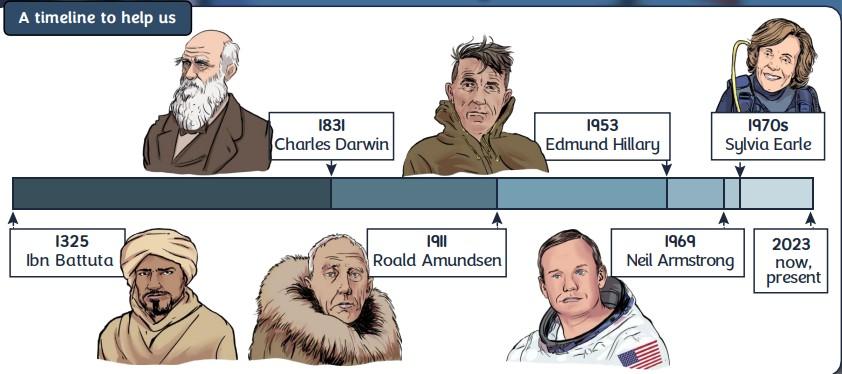
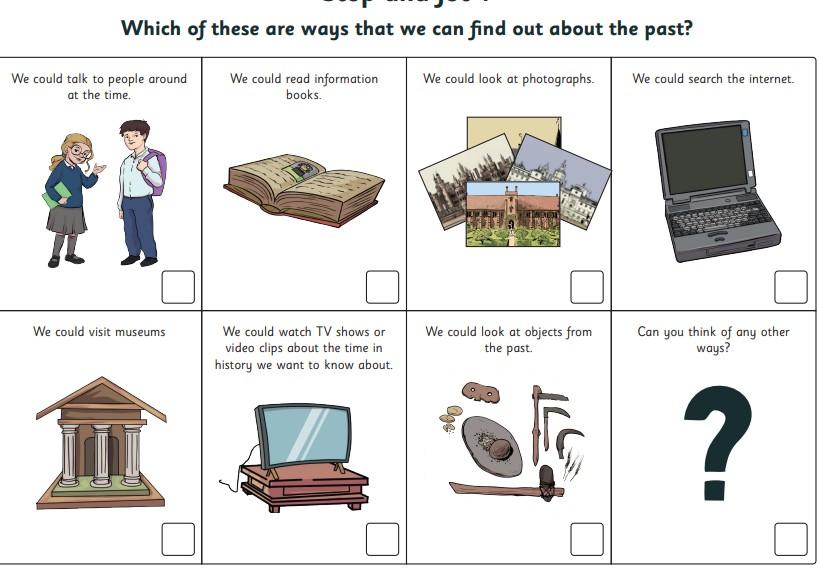
End points
Enquiry question
Wherehave humansexplored?

• Know written records are an important way of finding out about explorers. We can also use photographs, maps and objects.
• Name some significant explorers from the past - Charles Darwin, Neil Armstrong, Ibn Battuta, Roald Amundsen, Sylvia Earle and Edmund Hillary and know their achievements.
• Know some of the reasons why people explore.
• Know some explorers are considered to be so significant that their achievements are remembered with memorials including statues, stamps, coins and street and place names.
The Greatest Explorers
In this unit, the children will investigate the lives and journeys of five explorers from various eras. They will study an explorer from different perspectives, discussing what makes an explorer ‘great’.

Year 1 History: Great Inventions George Stephenson and the development of railways
Key vocabulary
Travel Move from one place to another.
Transport
Steam engine
Carrying people from one place to another.
A steam engine uses boiling water to make it move. The steam pushes the moving parts.
Railway The track that trains run on.
Locomotive The part of a train that makes it move
Significant Important
Development The process of growing and changing.
improvement If there’s an improvement in something, it gets better.
Invention
Something that has been designed or created for the first time.

End Points
Know we can travel in many ways today
Transport options have changed in living memory
The Wright brothers invented the aeroplane and Bessie Coleman was the first black woman to gain her pilot’s licence
Karl Benz invented the first car, and Henry Ford developed the assembly line, which was a new way of making cars that made them affordable for everyone.
Know we can travel in many ways today. People in the past could travel less far than we can today
Options to travel in the air, by car or by train have changed over time.
Know of the development of the railway and trains.
Know of key people involved in the development of the railway - Richard Trevithick, George Stephenson
Know the Wright brothers invented the aeroplane.
Know of the first commercial aeroplane flight that took place in 1914 in Florida, USA.
Trams – Know the significance of Blackpool’s Trams.
Enquiry question
WhowasGeorgeStephensonand whywashesosignificant?
George Stephenson


Great Inventions: Transport
In this unit, the children will explore the stories of two significant events in the history of travel, and the impact they had on people’s lives, back then and in the future. We will learn about the first aeroplane flight, before looking at early aeroplanes in greater depth. We will focus on the development of the railway and trains, which will link in with us learning about Blackpool developing as a seaside resort. We will also look at the development of Trams in Blackpool.
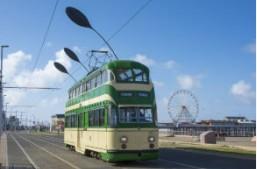

Year 2 History: Bonfire Night and the Great Fire of London
Key vocabulary
Stuart period 1603 to 1714 during the reign of the House of Stuart.
treason Attempting to overthrow the government or ruler
plot
A scheme or secret plan
chronological order Arranged in the order that it happened
evidence
Primary source
hero
villain
gunpowder
diary
firebreak
bakery
The clues that tell you about the past. Usually primary sources.
Original documents, diaries, photos and artefacts from the time of study
A person who is admired for their courage, outstanding achievements, or noble qualities.
A cruel, evil person
An explosive powder that was used in guns.
A book that people write about their lives in.
A gap that stops a fire spreading to nearby buildings.
A place that makes bread, cakes, etc.

Enquiry question 1
Shouldwestillcelebrate BonfireNight?
Enquiry question 2
DidtheGreatFiremakeLondona betteroraworseplace?
End points
Know about the Stuart period
Know it was illegal to belong to any other than the Church of England.
Know the story of the Gunpowder Plot.1605

Know how some people thought that the plotters were villains for plotting to kill the King. Others thought that the plotters were heroes.
Know about The Great Fire of London in 1666.
Know that the fire spread quickly because:
- houses were made of wood and built close together.
- it was very hot. There was no rain.
- there was no trained fire brigade
Know Sir Christopher Wren planned the rebuilding of London. buildings were rebuilt further apart and made with stone.
Know Fire brigades were set up to stop this from happening again.
Know The Monument is a memorial to remind us what happened.
Use primary and secondary sources like artefacts, images and texts. Including Samuel Pepys diary to learn about the fire.
Bonfire Night & The Great Fire of London
In this unit, the children will explore two very different events within the Stuart period. We will investigate the events of the Gunpowder Plot which led to Bonfire Night being introduced into the UK calendar, with opportunities provided for families to recount their Bonfire Night experiences. Next, they will study the Great Fire of London, and decide whether or not it improved London for those living there.


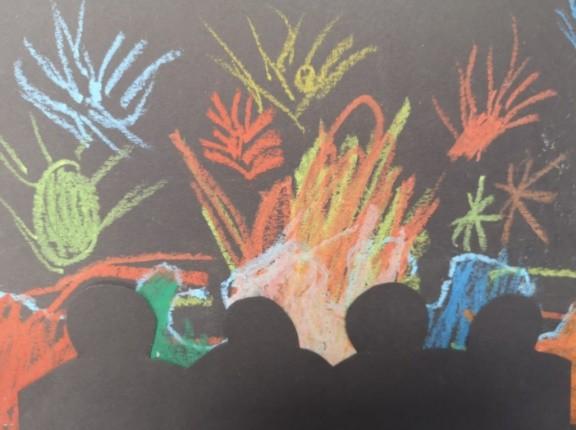

Year 2 History: Holidays
Key vocabulary
local
The small area around where we live
chronological order Arranged in the order that it happened observe To notice or look closely evidence Things that can prove that something is, or is not, true artefact an object that is made by a person, especially one that is of historical interest
Primary source Original documents, diaries, photos and artefacts from the time of study
Souvenir a thing that is kept as a reminder of a person, place, or event
Promenade a long, level area, usually next to the sea, where people can walk
Tourist

Enquiry question
HowhaveholidaysinBlackpool changedovertime?

A person visiting a place for leisure (usually on holiday)
Leisure Use of free time for enjoyment
Deckchair
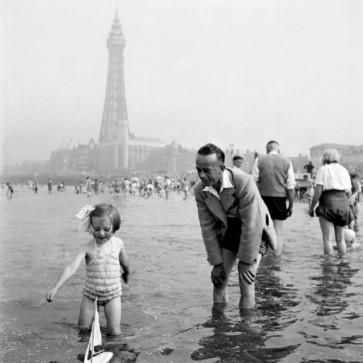
A folding chair used outside, often on a beach
End points
With a focus on Blackpool…
• Know how seaside holidays have changed over the last 100 years.
• Know similarities and differences between seaside holidays now and then.
• Know and talk about period features of seaside holidays such as clothes, entertainment, souvenirs and travel.
• Know we can find out about the past by looking at postcards sent to friends and family, Souvenirs, brochures and pictures.
• Know about the Lancashire tradition of Wakes Week.
• Know the development of transport and how that initially developed seaside holidays through car ownership and improved rail links
• Know how improved transport ultimately led to the demise of seaside resorts in Britain, through cheaper air travel.
• Discuss the increasing popularity of Blackpool as a seaside holiday destination
Holidays in Blackpool – Local History Study
In this unit, the children will learn about seaside holidays in Blackpool. Links will be made to prior learning as the children build on the knowledge and understanding they acquired in Year 1 when they looked at what it was like to be a child in the 1950s and 1960s. They will continue to develop their use of sources, with a particular focus on the use of oral history (from classroom visitors, friends and family) and images.



https://www.bbc.co.uk/archive/wakes-week-in-blackburn/zrsvt39

Year 2 History: Historical Heroes
Key vocabulary
hero
A person who is admired for their courage, outstanding achievements, or noble qualities significant Very important local The small area around where we live chronological order Arranged in the order that it happened observe To notice or look closely evidence
Things that can prove that something is, or is not, true artefact an object that is made by a person, especially one that is of historical interest Primary source Original documents, diaries, photos and artefacts from the time of study
portrait
A painting, drawing or photograph of a person document a paper or set of papers with written or printed information (e.g. letters, diaries, newspapers, census records)







Enquiry questions
Whatmakessomeoneahero?
Whoareourlocalhistoricalheroes?
Grace Darling was a Lighthouse Keeper’s daughter who helped to save 9 people after a ship crashed into the rocks and sank off the Northumberland coast near Bamburgh near her home in 1838. She was 22 years old when the rescue took place. Grace Darling became a heroine after her heroic actions. We will also be finding out about Blackpool’s local heroes helping to keep us safe at sea.

Know the events of Grace Darling’s life.
Know how the actions of Grace Darling’s actions led to the establishment of the RNLI. (reference to our local lifeboat stations in Blackpool, Lytham and Fleetwood.)
Understand how we know about Grace Darling from evidence that is available.
Know some differences between Grace’s life in the Victorian times and life in the present. (compare differences between the RNLI then and now).
Know of local hero Mr John Arnold Parkinson known as ‘The Sea Serpent’.
Know about the Shipwreck Memorial in Cleveleys and the history of the ships which have fallen in our waters over the years.
Grace Darling
Our Local Heroes
This unit will support the children in gaining an understanding of the breadth of contributions people can make in order to become significant. Living by the sea, we will make use of our links to the RNLI and find out about Grace Darling – how her actions led to the establishment of the RNLI. The children will use a range of sources of evidence, including oral history, visual images and written documents. We will also find out about a local hero Mr John Arnold Parkinson known as ‘The Sea Serpent’ and the Shipwreck Memorial in Cleveleys along with the history of the ships which have fallen in our waters over the years. All of which highlighting the need for our heroes of the sea.




Year 3 History: The Stone Age
Key vocabulary
Agriculture
Flaking
The raising of crops and animals for human use
A process of shaping stone by chipping pieces off the edges
Tools
HunterGatherer
Objects used to improve the performance of a task
A person who meets their needs by hunting animals and gathering plants
Palaeolithic Era
The earliest part of the Stone Age characterised by tools made of crudely chipped stone and by cave art
Mesolithic Era
Neolithic Era
The second period of the Stone Age when humans moved around as hunter-gatherers.
The last period of the Stone Age when humans began to develop agriculture and use tools and weapons
Prehistory Before written records began
Enquiry question
Howdidlifechangeduring theStoneAge?

• know that prehistory refers to the study of humans before there was writing,
• Know The Stone Age gets its name from the stone (flint) used to make weapons and tools.
• know some ways life changed from the early (Palaeolithic), middle (Mesolithic) and new (Neolithic) Stone Age, e.g. tools, hunting & gathering, settlements
• Know the major change that happened later in the Stone Age was that people started to settle in communities and farm the land and trade.
• Know that people migrated around Europe during this period of history. From the later Stone Age onwards, they brought farming and craft techniques with them.
• Know about the Stone Age from studying archaeological remains and artefacts.
• Know that the new archaeological finds often change our interpretation of what happened in the Stone Age
• Know the period ended with the development of metalworking
• use archaeological evidence from Skara Brae to explain what life in a Neolithic settlement was like.
• Star Carr was a Mesolithic hunting camp near Scarborough, North Yorkshire.
• Stonehenge is a Neolithic stone monument near Salisbury, Wiltshire


The Stone Age
In this unit, the children will explore how life changed for people during different periods of the Stone Age, including the Early, Middle and New Stone Ages. They will cover why the period was called the Stone Age, and what archaeological evidence there is from the period, particularly in the form of artefacts and monuments. The main focus will be on the New Stone Age and how that contrasts with the earlier periods. The children will look in detail at the Neolithic settlement at Skara Brae and the conclusions we can reach from the evidence found at the site


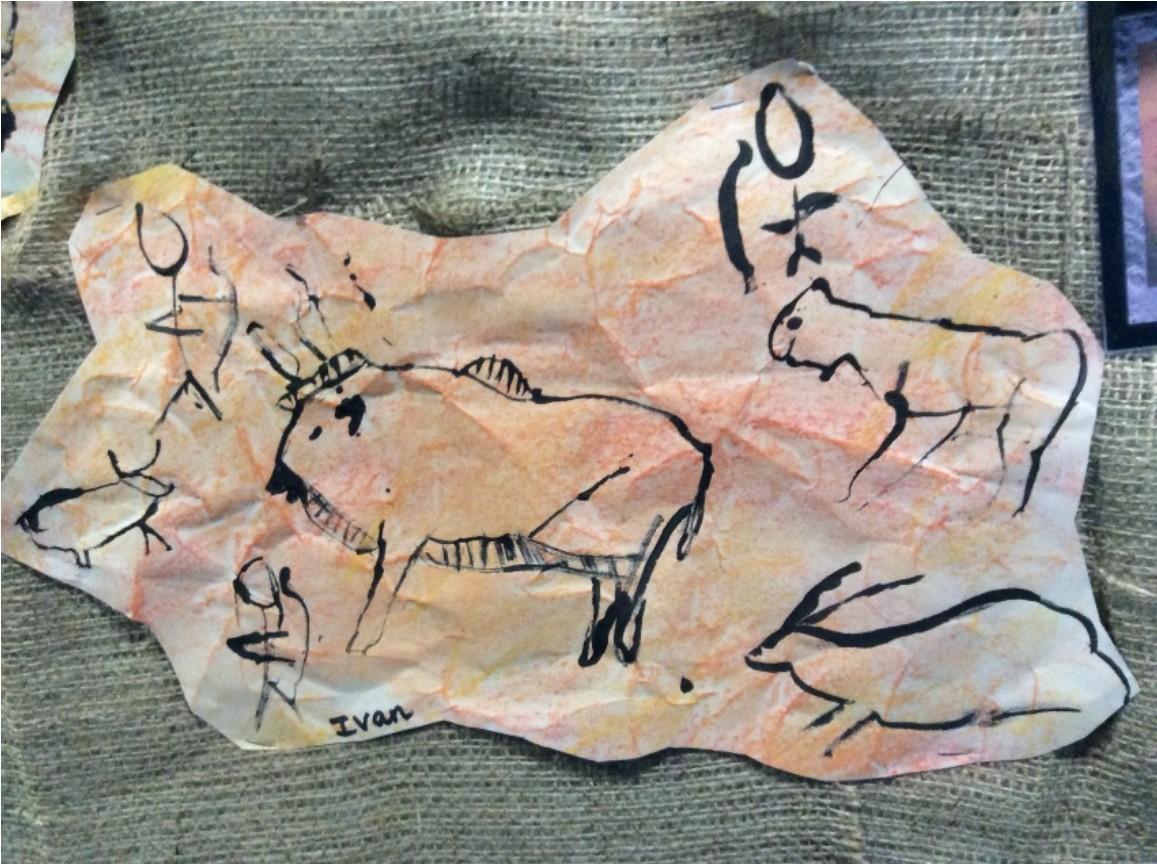 Cross-curricular links
Cross-curricular links



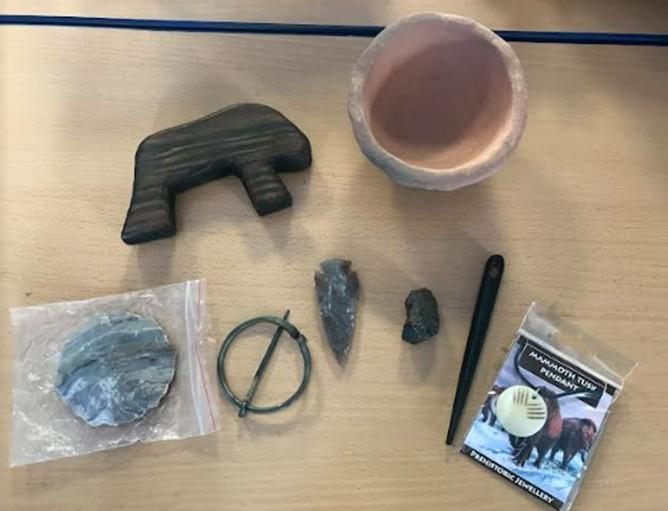
Our resources

Year 3 History: The Bronze & Iron Ages
Key vocabulary
Bronze
Smelt
A type of metal made from copper and tin to make it harder and more durable.
To melt in order to separate different metals.
Wattle and daub
Hillfort
The building material of a house made from sticks (wattle) and clay, straw or manure (daub).
Enquiry question
Howdidlifechange fromtheBronzeAge totheIronAge?
A defended settlement built on hilltops.
Roundhouses Iron Age circular houses.
Tribe
Celts
A community of people, ruled by a leader, with shared traditions, ancestors and culture.
The name given to people who lived in Britain during the Iron Age.

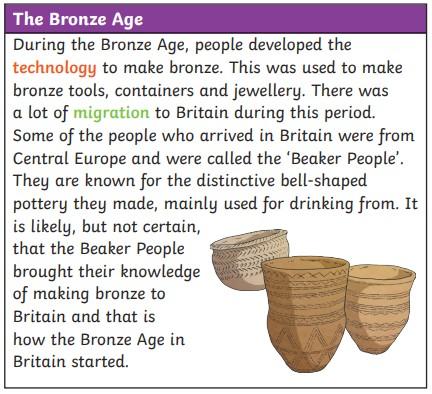

• Summarise the significance of the Beaker People, e.g. migration, trade
• know why they are called the ‘Bronze Age’ and ‘Iron Age’,
• know some ways life changed from the Bronze Age to the Iron Age, e.g. settlements, roundhouses, hillforts
• demonstrate understanding of what life was like in NW England during this period
• Knows that in the Bronze Age, people developed the technology to make bronze. This was used to make bronze tools, containers and jewellery.
• Knows that people in Britain probably learned how to produce the metal from the Beaker people who came from Western Europe. (They were called Beaker people due to the shape of their pots, which were like upturned bells.)
• Knows that Amesbury Archer was buried around 2300 BC. Burials like the Amesbury Archer are very useful for finding out how people lived and what they thought was important.
• Knows that during the Iron Age, people began to make tools and weapons from iron. Iron was better than bronze because it was more common, lighter and harder.
• Knows the use of iron led to big advances in farming with the use of iron tools. This led to more food being available and therefore an increase in the population.
• Knows we have fewer Iron Age objects than those from the Bronze Age, as iron rusts and is less durable.
• Today, we call the people who lived in Britain during the Iron Age ‘Celts’. They were made up of many different tribes, but they did have similar languages and beliefs.
• Knows that Hillforts developed during the Iron Age. Communities lived on hills for protection
• Knows there were advances in house building
• demonstrate understanding of what life was like in NW England during this period

The Bronze Age and the Iron Age
In this unit, the children will explore the key features of the Bronze and Iron Ages, and come to conclusions about the developments within the periods. Links will be made to the Stone Age period, which they may have studied in the autumn term. Throughout the unit, the children will use a variety of sources of evidence to investigate the period, including archaeological evidence with a focus on the Amesbury Archer, the Lindow Man, Roman written accounts of the Celts and reconstruction drawings of both periods.



Year 3 History: Local History - Blackpool
Key vocabulary
Locality A neighbourhood or area.
Significant
Community
Something or someone very important.
A group of people who live in the same area or who have something in common.
County
Heritage
An area of a country which usually includes several towns and countryside.
The history and traditions of a particular area or culture that are significant today.
Victorian Era
Tourist attraction
The time spanning the 63-year reign of Queen Victoria (18371901).
A place of interest that tourists visit.

• Know some of the key events of Blackpool’s past in Entertainment over different time periods.
• Know the history of Blackpool’s famous entertainment venues –The Winter Gardens, Blackpool Tower and Tower Circus, The Grand Theatre and their significance in the growth and development of Blackpool as a holiday resort
Listed Buildings –
• Know how a listing marks and celebrates a building's special architectural and historic interest, and how it protects it for future generations.
• Know which of our buildings or places are of special local, national or even world interest.
• Gain a better understanding of our local area and develop a sense of pride in it.
• Recognise that Blackpool needs protecting for future generations to enjoy. (Blackpool Rock is part of the heritage and tradition of British confectionary and needs protection from imports)
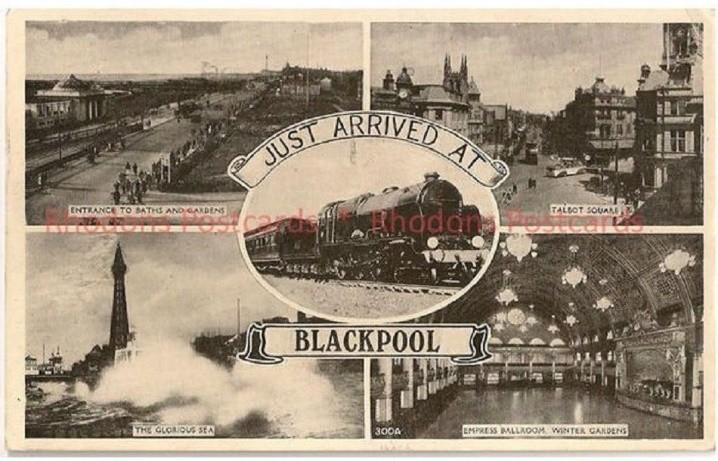
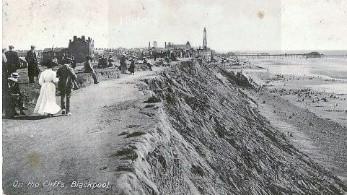

Enquiry question
HowhasBlackpool developedasatourist town?
Which buildings make it the home of entertainment and showbusiness?
Why should we protect them?

Local History
In this unit, we will investigate our local area looking at how Blackpool has developed as a tourist resort. We will work with our local museum ‘Showtown’ and Heritage Blackpool to find out what makes Blackpool special as an entertainment resort. We will consider which buildings are of significance and should be preserved. We will see all these buildings on our trip down to the Museum!


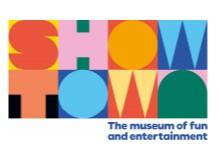
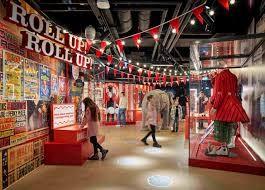
Year 4 History: Ancient Egypt
Key vocabulary
Pharaoh
A ruler of ancient Egypt.
hieroglyphics
A system of writing that used pictures and symbols (hieroglyphs) instead of letters. irrigation
A system of canals or channels Egyptians dug to supply water to grow crops over a larger area than the water would reach naturally.
Enquiry question
How much did the Ancient Egyptian people achieve?
sarcophagus
death mask
Key takeaways
A coffin holding the mummified remains of a pharaoh.
A mask resting over the Pharoah’s face, inside the sarcophagus.

1. We can find out about the Ancient Egyptian civilisation by studying archaeological remains and writing.
2. The River Nile was important because it made the land fertile, so Egyptian people could grow crops. It was also used for transport.
3. Society was structured with the pharaoh at the top and enslaved people at the bottom.
4. Most people in Ancient Egypt were farmers.
5. Ancient Egyptian people worshipped over 2000 gods and goddesses.
6. Ancient Egyptian people believed in an afterlife.
7. Archaeologists are able to read hieroglyphics following the discovery of the Rosetta Stone.
8. Howard Carter discovered the tomb of Tutankhamun in November 1922.
9. Many museums in the UK have an Ancient Egyptian collection.
10. Ancient Egyptian people had many achievements in such areas as farming, building, religion, medicine, writing, mathematics and crafts.
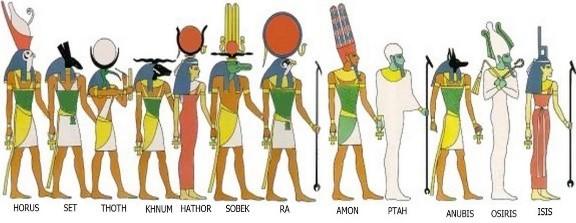
● Know how the River Nile was important in allowing the Egyptians to prosper in the desert
Know that we can learn about the Ancient Egyptians by studying hieroglyphs and artefacts left behind in tombs.
Know that society in Ancient Egypt was structured with a hierarchy of jobs and importance.
Know that Egyptians built the pyramids as tombs for the pharaohs. Howard Carter discovered the tomb of Tutankhamun in November 1922.
Know that Ancient Egyptian people worshipped over 2000 gods and goddesses.
Know that Ancient Egyptian people believed in an afterlife.
Knows the ancient Egyptians wrote in hieroglyphics on papyrus. Archaeologists are able to read hieroglyphics following the discovery of the Rosetta Stone
Ancient Egyptian people had many achievements in such areas as farming, building, religion, medicine, writing, mathematics and crafts


The Ancient Egyptians
In this unit, the children will explore who the Ancient Egyptians were, what they did, and discuss whether Ancient Egypt deserves its reputation as one of the most important early civilisations.


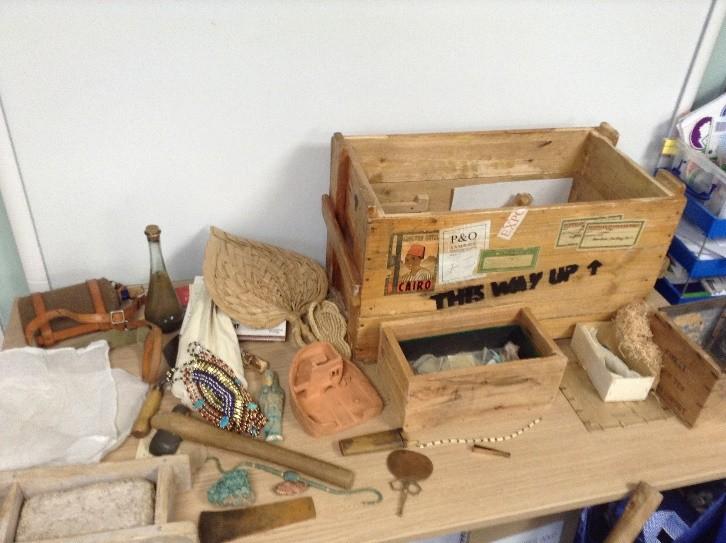



Year 4 History: The Romans
Key vocabulary
Roman
Empire
The name used for the land that was controlled by the Romans, including parts of Europe, Middle East and North Africa.
emperor The ruler of an empire.
legion
A large section of the Roman army, made up of 5000 soldiers.
Celts People living in Britain.
Iceni
Caledonia
A tribe of Celts who lived in the east of Britain.
The name used in Roman times for Scotland.
Picts Tribes from Caledonia.
Enquiry question
Whathappenedwhenthe Romanpeoplecameto Britain?


Queen Boudicca, of the Iceni tribe, formed an army to rebel against the Romans in AD60. Thousands of people died in these battles but the Romans eventually won.

Hadrian’s Wall was built to control the North
● Know that the Romans made a number of attempts to invade Britain as the Roman Empire spread.
● Know some reasons why the Roman invasion initially failed,
● Know that Boudicca led a revolt against the Romans in AD 60/61
● Knows that in AD 122, Emperor Hadrian decided that a northern border wall should be built to help the Romans control and protect their territory in Britain. It was manned by troops from across the Empire and became known as Hadrian’s Wall.
● Know about life as a Roman soldier on Hadrian’s Wall.
● Know some positive legacies left by the Romans, e.g. roads, villas and forts
● Knows they built new roads and towns in Britain. This increased trade from the rest of the empire and increased diversity in towns. Some of these roads and towns survive today. Refer to local names Kirkham, Ribchester, Lancaster
● The Romans wanted resources from Britain and came to our local coastline in search of minerals.
● Know that Roman Britain reached it’s height in 160 AD and by 410 AD links with Rome were largely severed. The Roman
 Boudicca
Boudicca
Roman Britain
In this unit, the children will learn about the Roman invasion of Britain and its impact on the lives of the Celts. They will consider whether the Roman settlement was a positive experience for all involved, and explore the long-term legacy of the invasion. They will use a variety of sources of evidence to investigate the topic, including visual sources of artefacts and archaeological sites. The children will analyse written sources from writers.
















Loan Boxes


Ribchester Roman Museum


Year 4 History: Crime & Punishment
Key vocabulary
bobbies/ peelers
Police officers, named after Sir Robert Peel, who introduced the first police force in London in 1829.
deterrent To discourage someone from doing something.
execution A sentence of death. highwaym en Criminals who would rob people while they were travelling. This was very common during the Stuart and Georgian periods.
trial
treason
A judge and jury listen to evidence in a court to decide whether a person is guilty of a crime.
A crime against the King, Queen or the government.
Dick Turpin was an English highway man. He made a lot of money through many criminal activities, such as poaching, burglary, horse theft and murder. He is most famous for 'highway robbery', on his horse, Black Bess. He was eventually captured and hanged at York Castle in 1739.
Enquiry question
Howhascrimeand punishmentchangedover time?

• Attitudes and values about what is a crime and how it should be punished have changed over time.
• Suffragettes campaigned for women’s suffrage. They were considered criminals and put in prison. Now we celebrate their achievements. Famous Lancashire Suffragettes are Barbara Castle and Mary Agnes Hamilton
• Some actions are still considered crimes, but the punishment is less or more severe. Other crimes are no longer crimes at all, for example celebrating Christmas.
• In the early 1800s, over 200 crimes were punishable by death as people thought this would stop people committing the crimes.
• Over the years, the number of crimes punishable by death was dramatically reduced. In 1965, the death penalty for murder was banned in England.
• In the 1700s, transportation to the colonies was a popular punishment.
• Prisons are a form of punishment, but they now also work to re-educate people who have committed crimes.
• The ‘Police’ were only officially created in the 1800s.
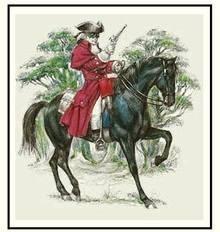
• In 1842, a detective branch was created – it was easier for plainclothes policemen to detect and catch criminals than policemen in uniform
• it became compulsory for all districts to have a police force.
• We can find out about crime and punishments from a range of sources, depending on the time period.
• This includes visiting old prisons, reading newspaper reports and looking at drawings and photographs.
• Know Dick Turpin is one of the most famous highwaymen. Some sources present him as exciting/heroic. George Lyon (1761–22 April 1815) was a highwayman in Lancashire.

Crime & Punishment
In this unit, the children will explore how and why Crime and Punishment has changed over time. This will support them in developing an understanding of change and development over a long period of time. They will utilise a variety of sources of evidence to develop their knowledge and understanding of the different time periods. Within this, they will look at some small case studies in more depth to understand triggers for change, including the Bloody Code of 1815, the founding of the first police force, transportation of prisoners and the activism of the suffragettes
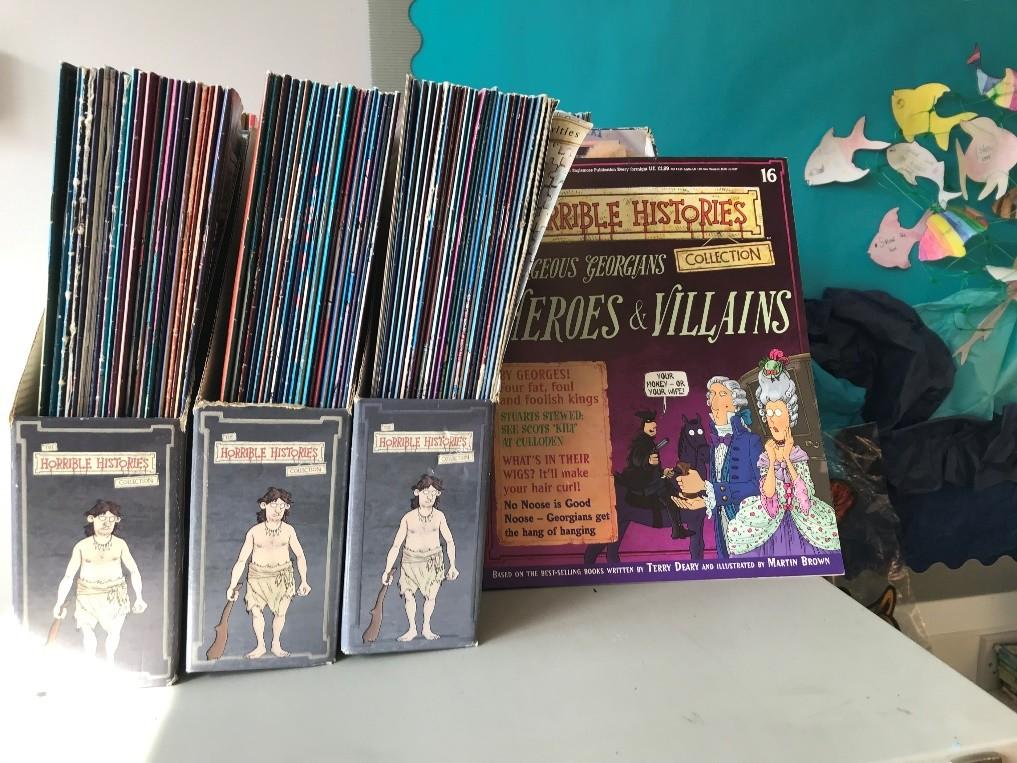

Year 5 History: Anglo-Saxons
Key vocabulary
hoard Hidden treasure stored away
craftsmanship
archaeologist
The skills people use to build, make and create things
Someone who studies history and looks at historical evidence
period A time in history
migrate To move around to live in a new place.
settle To stay in a new place you have moved to.
End Points

Know the period of Anglo-Saxon history is about the people of England following the Roman period
Know people of many backgrounds were Anglo-Saxon
Know Anglo Saxon children would have helped with farming and other daily jobs
Know Anglo-Saxon evidence remains today from burials and place names
Knows the religion of the early Anglo-Saxons was Paganism. They worshipped many gods. They gradually converted to Christianity, building churches and setting up monasteries, which became centres of learning
Evaluate the craftmanship of Anglo-Saxon people
Hypothesise about the evidence left by Anglo-Saxon people

Enquiry question
WastheAngloSaxonPeriod reallyadarkage?
The Staffordshire Hoard is one of over 300 Anglo-Saxon hoards found across Britain. 4000 items were found there.

The Staffordshire Hoard is one of over 300 Anglo-Saxon hoards found across Britain. 4000 items were found there.
-Know of the archaeological remains at Sutton Hoo and the Staffordshire Hoard and what it tells us about Anglo-Saxon people. Know how they have made historians change their minds about a Dark Age.
-Know of ‘Beowulf’ and what it tells us about the Anglo-Saxons
Reach an informed conclusion from historical evidence whether the Anglo-Saxon period was a dark age


The Anglo Saxons
In this unit, the children will learn about the world of the Anglo-Saxons. They will consider why they came to Britain and whether the period deserves to be called the ‘Dark Ages’. Throughout the unit, there is a strong focus on the range of sources that provide us with evidence about the people living at that time. The children will examine archaeological evidence, such as the Sutton Hoo ship burial and the Staffordshire hoard.




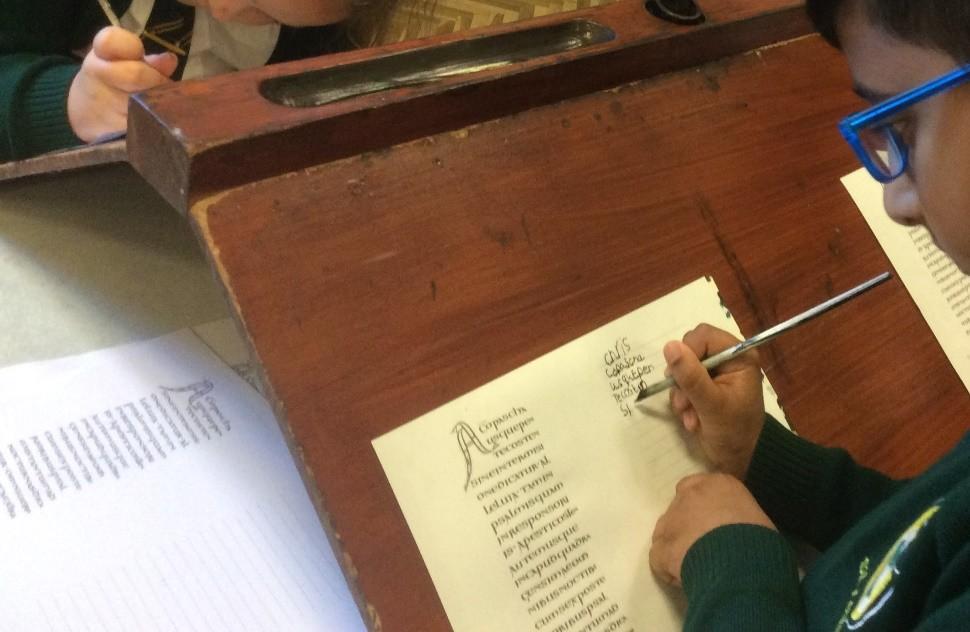
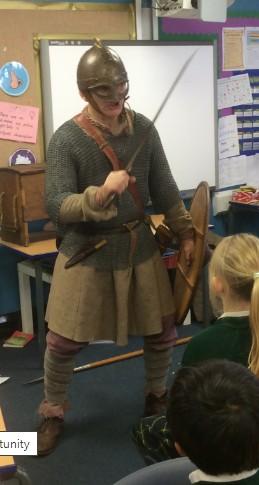

Our reading resources

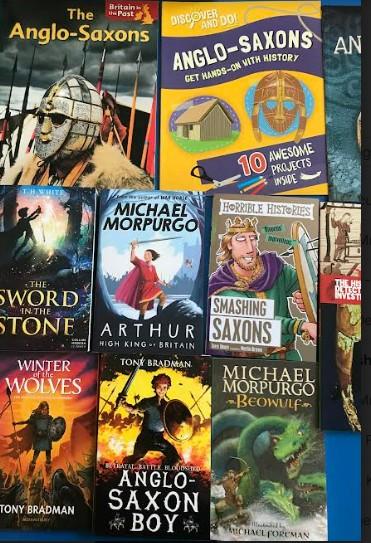
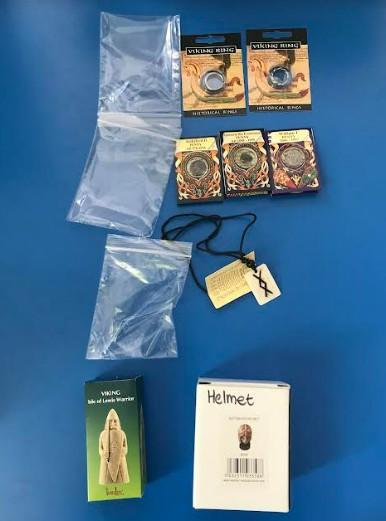
Year 5 History: Vikings
Key vocabulary
Viking
The name of someone who came from Scandinavia (Norway, Denmark and Sweden).
raider Someone who takes or steals from a place.
monastery A holy place where monks live.
migrate To move around a live in a new place.
settle To stay in a new place you have moved to.
overpopulation Too many people living in one area.
invader
Someone who travels somewhere to take over and make it their home.
monarch A ruler, king or queen.
Primary source
Secondary source
Something written by someone from history at the time
A source written many years after something happened

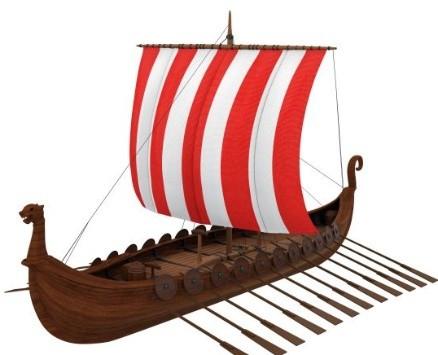

End Points
• know main beliefs of the Vikings and how beliefs change
• know the ways Vikings lived in Scandinavia as farmers, some democratically with equal rights
• know reasons why some chose to migrate to settle in Britain
• know Vikings were successful sailors who travelled and traded, goods and slaves, in many locations
• know the Vikings raided, then began to settle in Britain while the Anglo Saxons were also around
• Know that Historians continue to review their interpretation of what Viking people were like
• make a reasoned judgement about the way Vikings are represented
Enquiry question
WeretheVikingsasvicious andVileastheyare represented?

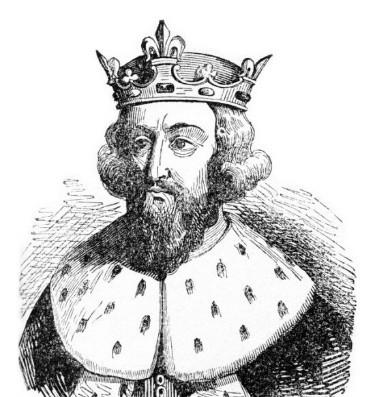








800 AD 900 AD 793 AD – Viking raid on Lindisfarne 787 AD – First Viking raids 871 AD – Alfred became king 865 AD – Vikings began to remain in England 899 AD – King Alfred died 849 AD – Alfred was born 700 AD 600 AD
The Vikings
In this unit, the children will learn about the Vikings, and consider the reasons why they raided and then settled in Britain. They will investigate the popular view of the Vikings as raiders, ruthless in their ways of obtaining wealth. They will study primary sources of evidence, such as accounts by monks of the raid on Lindisfarne, as well as archaeological finds, to understand why this interpretation of the Vikings has become so popular. They will examine King Alfred’s struggle and victory over the Vikings.







I can evaluate evidence about the Vikings
Year 5 History: Journeys
Key vocabulary
migration moving to a different part of earth
emigration leaving a country
immigration arriving in a new country
refugee
someone forced to leave their country to escape war, disaster or persecution
migrant someone who moves from one country to another often to find work
asylum seeker
someone who flees their country saying they need a safe place
Tudor alive in Tudor period 1485-1603
colonise to take over another land and make it part of your own
indigenous coming from a specific place
Edwardian Years 1901-1910
prejudice hatred of a group of people
Discrimination
Choosing to leave someone out or be hurtful to someone different
anti-Semitism hatred towards Jewish people
Enquiry question Whatmakes peoplegoona journey?

In 1948, the British Nationality Act was passed. This act gave people from the West Indies the opportunity to settle in the UK. The act was aimed at rebuilding the British economy, as there was a shortage of labour.

Walter Raleigh was born in Devon in 1552. He was very well educated, and is also known as a poet and writer as well as an explorer.

Almost 10,000 (mostly Jewish) children were brought to Britain from Central Europe between December 1938 and the outbreak of the Second World War in September 1939. One of these was Vera Schaufeld.
Topic End Points
Know people go on a journey for many different reasons.

Know that these journeys differ – some were taken by choice, some for pleasure, some for a better life and some out of necessity for survival
Know of the voyages of Walter Raleigh – Tudor explorer
Know about the Titanic and it’s link to Irish immigration
Know about Kindertransport in World War Two
Knows about the voyage of the Empire Windrush.-.
Some travellers have a positive experience when they arrive at their destination. Others, like those on the MV Empire Windrush, may face discrimination.
Know we can find out about journeys using many different sources of evidence, depending on the time period being studied.
Know songs and poems can be used to find out about the past, for example those of the Windrush passengers.
Know people continue to travel to the UK today for many different reasons, including finding work and escaping persecution in their own country.
Know people have also left the UK as migrants. Often this is for economic reasons, for example passengers on the RMS Titanic. Some people continue to leave today
The Titanicwas built in Belfast at the Harland and Wolff Shipyards. The Titanic then set off on its maiden voyage across the Atlantic. The White Star Line boasted that the ship was unsinkable. Margaret Rice was one of the passengers.
Walter Raleigh
The Titanic
Kindertransport
Empire Windrush Tudor
Walter
Titanic
Kindertransport Windrush British Empire starts British Empire ends
period
Raleigh’s life
sinks
Journeys

In this unit, the children will explore the question of why people go on a journey, and look at five very different types of journey in depth. The journeys selected span from the Tudor period to those undertaken today by refugees. The children begin by studying the voyages of Walter Raleigh, then the voyage of the Irish 3rd class passengers on the Titanic, before learning about the Kindertransport in World War Two and the voyage of the Empire Windrush . Finally, they will examine why refugees make dangerous journeys today.

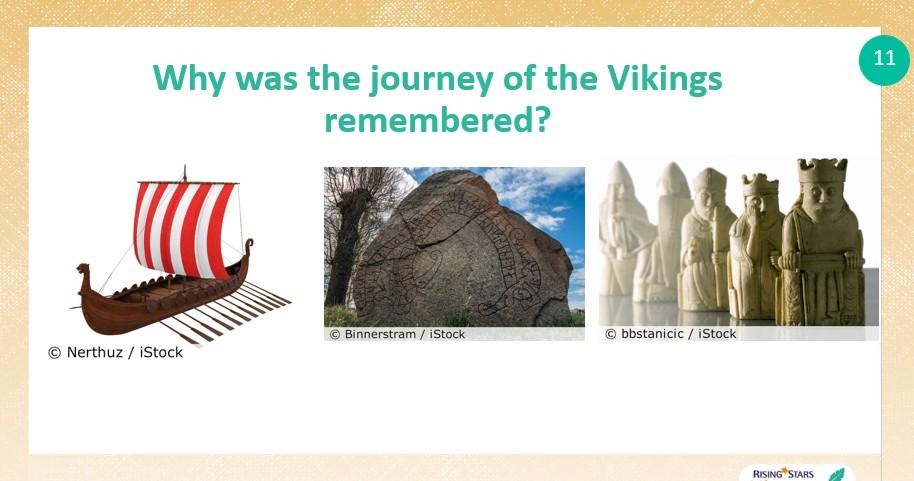
Cross-Curricular Links…




Geography field trip
We had the chance to see some of Blackpool’s Victorian buildings and other buildings from Blackpool’s past. We discussed changes through the years and also looked at some of the construction for how Blackpool might be in the future.
Year 6 History: The Mayan Civilisation
Key vocabulary
Civilisation
An organised society with is own culture and way of life, existing in a particular area over a particular period of time
City-state
Astronomy
An independent city — and sometimes its surrounding land — which has its own government, completely separate from nearby countries
The branch of science that studies outer space focusing on celestial bodies such as stars, comets, planets, and galaxies.
Nobles Rulers of the Mayan Cities.
Scribes
People paid to write things down, either as an official record, or for someone else unable to write.
Hierarchy
Glyphs
Calendar
A way of ranking and organising things or people. It is a system to decide who can make decisions, and who is forced to comply with those decisions.
Symbols used in the Mayan writing system. Each symbol represents a word or sound.
A printed table showing all the days, weeks and months of the year.
Codices
Temple
Pagan
Ancient handwritten texts. Maya codices could be unfolded like a concertina. One text is called a codex.
A building used for the worship of a god or gods in some religions.
A person holding religious beliefs other than those of the main world religion, who may worship more than one god.
Sacrifice To kill an animal or person in a religious ceremony
Summary
The Mayans were a Stone Age society or ‘civilisation’ who lived in Mesoamerica – now known as Central America.
The Maya first appeared around 2000BC, but their main period is around 0AD to around 1300AD.

Did you know?
Many historians think the Maya were the most advanced society in Meso-America during this time period. They were expert mathematicians and astronomers and used this knowledge to create calendars. This told the Maya when to plant crops, when to harvest and when to make sacrifices to the gods.
They also had their own writing system, that had over 500 symbols or glyphs to represent words or ideas.


Enquiry question
Whyshouldwe remembertheMaya?
End points
Describe the lives of the Maya in the past and present day
Have knowledge of key areas of the Maya Civilisation, including: cities, beliefs, technology and culture.
Knowthe Mayacivilisationformedasocietyofcitystates
KnowtheMayabelievedinmanygods
KnowtheMayapeoplebuiltpyramidstoworshiptheir godsandoffersacrifices
knowMayapeoplemademanytechnologicaladvances andestablishedahugetradingempire
KnowtheMayahadawritingsystembasedonsymbols called‘hieroglyphs’.
KnowtheancientMayadevelopedan advanced numbersystemfortheirtime.
Understand theories to explain why the Maya civilisation disappeared
Give reasons why the Maya should be remembered.
The Maya Civilisation
In this unit, the children will explore the world of the Maya, and debate whether they should continue to be remembered today as a significant culture. The children will begin by learning about the lives of the Maya today, before focusing on ancient Maya architectural achievements, their religion and surviving writings. They will also study the possible reasons why the Maya city states declined after 900 AD, looking at conspiracy theories and considering whether everything they read online is reliable.



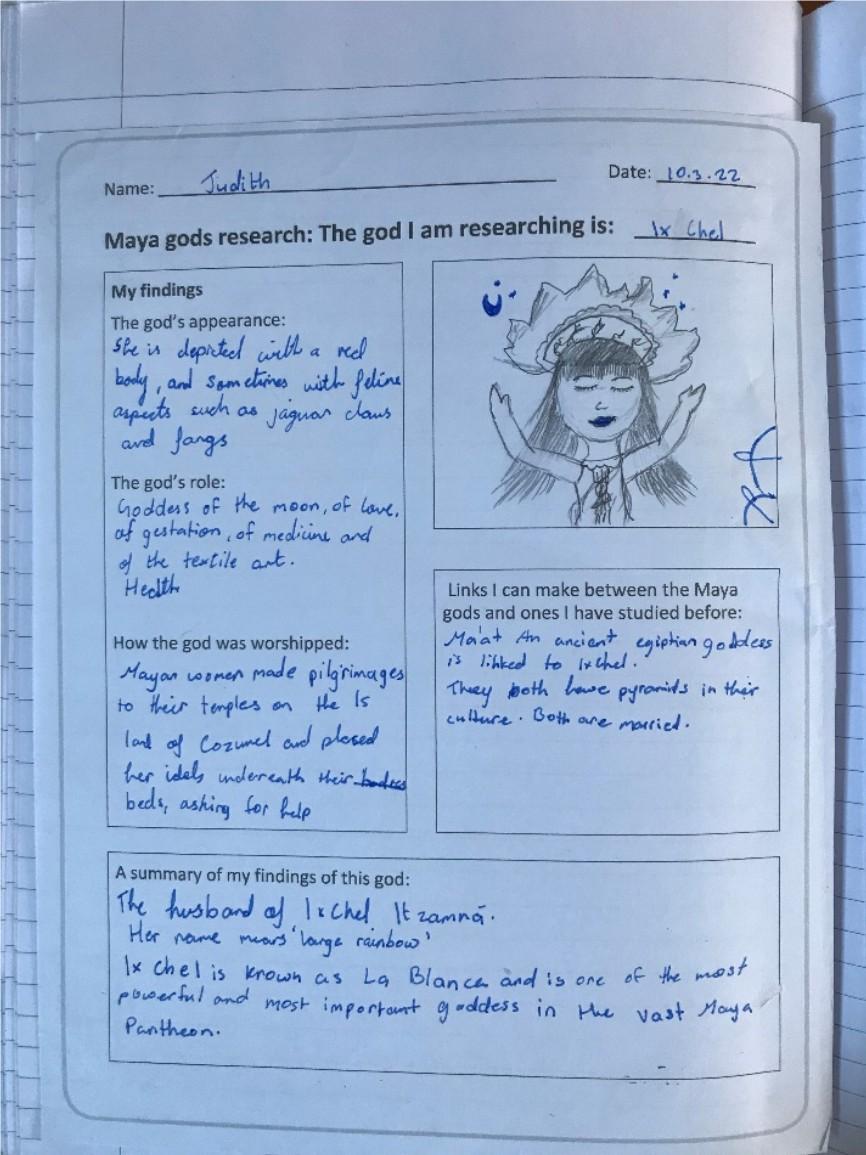
Links to Ancient Egypt
Year 6 History: The Ancient Greeks
Key vocabulary
Civilisation
City-state
An organised society with is own culture and way of life, existing in a particular area over a particular period of time.
An independent city — and sometimes its surrounding land — which has its own government, completely separate from nearby countries.
Empire A group of countries that is ruled by one ruler or country.
Democracy
A fair political system where adults vote for an elected government who then make decisions on how to run the country.
Spartans People from the Greek city of Sparta.
Athenians People from the Greek city of Athens
Oligarchy
Monarchy
A form of government where most power is held by a small group of people, typically the most powerful The word oligarchy is from the Greek for "few" and "rule".
A form of government where a single person, the Monarch, is in charge.
Temple A building used for the worship of a god or gods in some religions.
Myth A traditional story, especially one concerning the early history of a people.
Hoplite A heavily armed soldier of Ancient Greece.
Phalanx
Legacy
A body of soldiers standing or moving in close formation.
Something that is handed down from one period of time to another period of time
Summary
The first important Greek civilisation was the Minoan period from 2200–1450 BC. They lived on the island of Crete, and became very rich by trading with other countries. The Mycenaean period was from 1600–1100 BC. These people were important warriors and builders, and settled on the mainland. The Greeks flourished during the Classical period from 490–350 BC. During this time, the city-states, particularly Athens and Sparta, were very powerful. Our focus is Ancient Greece from 777–146 BC, which includes the Archaic, Classical and Hellenistic periods.


End points
WhatdidtheGreeksdo forus? Enquiry question
To know the location and time period of Ancient Greece and draw comparisons to other civilizations studied, including the Maya
Know how the timeline for Ancient Greeks is divided into a number of different periods: e.g. Minoan, Mycenaean, Classical, Greek, Hellenistic, Roman Greek
Knows the Ancient Greeks worshipped many gods and goddesses.
To identify similarities and differences between life in the Greek City States Sparta & Athens
To interpret information from artefacts and archaeological sites to make reasoned judgements on what life was like in Ancient Greece
To understand the importance of the Olympic games to the Ancient Greeks and make comparisons with the modern games
Have knowledge of key areas of the Greek Civilisation’s achievements
To identify the most important legacy of the Ancient Greeks giving reasons.
Ancient Greece
In this unit, the children will learn about aspects of political, social and cultural Ancient Greek life. They will focus on some areas in depth, such as the systems of government, religion and the importance of the Olympic Games. They will examine the legacy of the Ancient Greeks, and will have opportunities for further study of areas of interest. While they will gain an overview of the time period, the main focus will be on the Classical period.


Links will be made to prior learning on the nature of empires, particularly Year 4 Unit 2: Roman Britain.
Year 6 History: Selfless Service – World War Two
Key vocabulary
Allies
Axis
The United Kingdom, France and Poland, later joined by other countries, including the USSR (Soviet Union), the United States of America and China.
The Axis Powers were originally Germany, Japan and Italy. Other countries joined them later
Annex
Blitz
To take another country’s land and make it part of your country
The name given to the bombing raids that Germany launched against Britain in 1940, during World War II (1939–45). For eight months German airplanes dropped bombs on London and other cities.
Evacuee
Rationing
Children who were evacuated to the country during wartime.
Rationing was a controlled system used in World War 2 that made sure people had equal access to food, clothes and fuel.
Civilian
A civilian is a person who is not a member of a country's military or any other fighting group
Nazi Party
Propaganda
A German political party with racist and anti-Jewish ideas, led by Adolf Hitler
Information designed to promote a political idea or opinion.
Summary
The Second World War was the first total war, involving everyone in many countries. It began in 1939 when Germany invaded Poland, and gradually every major country of the world became drawn in. It cost more than 50 million lives across the world, including nearly as many civilians as soldiers. Ordinary people showed enormous bravery and resistance in the face of great threat and cruelty. For families in Britain, the war impacted upon each man, woman and child in a way that had never happened before.
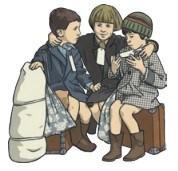

WhatwastheimpactofWW2on Blackpool? Enquiry question
End points
Understand how World War 2 had an impact on our local area.
Explain how the Second World War had an impact on the lives of children
Understand the dangers of life in WW2, with particular reference to the Blitz and bombing
Understand that the degree of danger in World War 2 varied depending on location
Use and evaluate a range of different types of sources of evidence to arrive at judgements about WW2
War graves and local war memorials can tell us a great deal about the local people
Over 3.5 million people, mostly children, were evacuated from the cities to the countryside, where it was believed they would be safer from bombing. 100,000 people were evacuated to Blackpool.
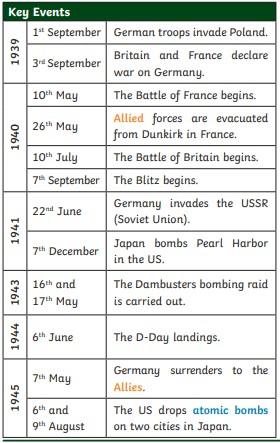
Did you know?
who died.
The Impact of War
In this unit, the children will research and compare the impact of the First and Second World Wars on their locality. The unit does not aim to study the First or Second World Wars, as these are both part of the secondary school curriculum. Some context about the wars is provided for the children, but the focus of the sessions is on the Home Front and how the wars impacted on the community.





Music
Design Technology


History Week Armistice Day Centenary 2018



Links with the parish and community






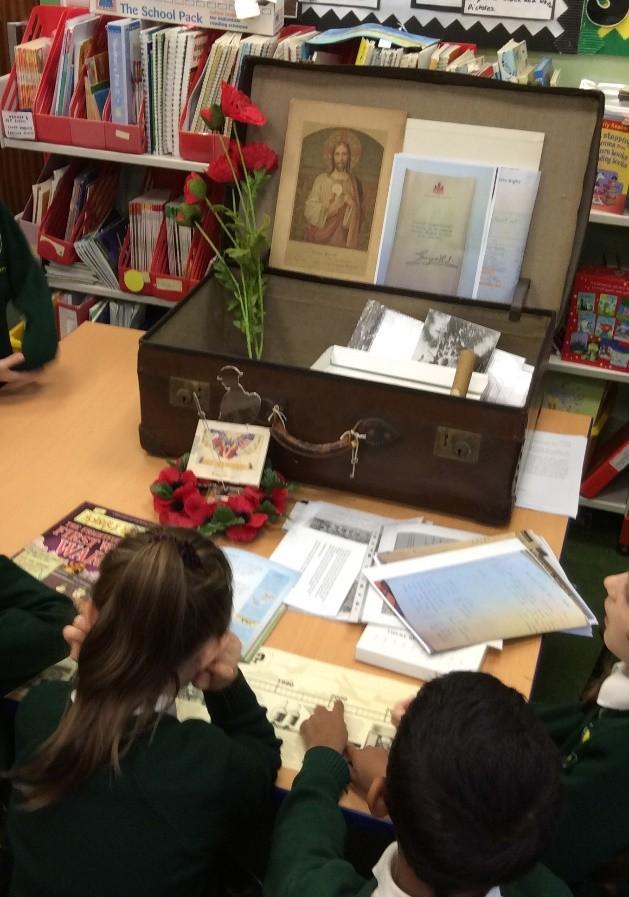








Blackpool













Home Learning VE Day
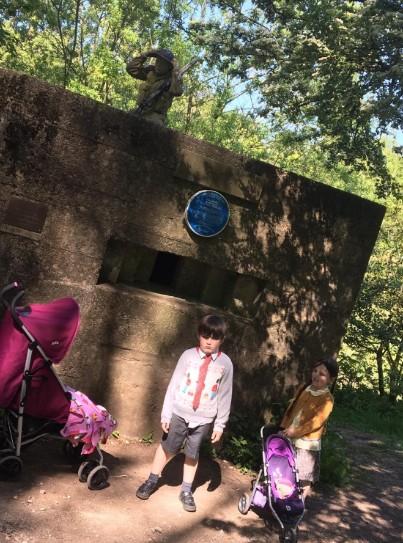



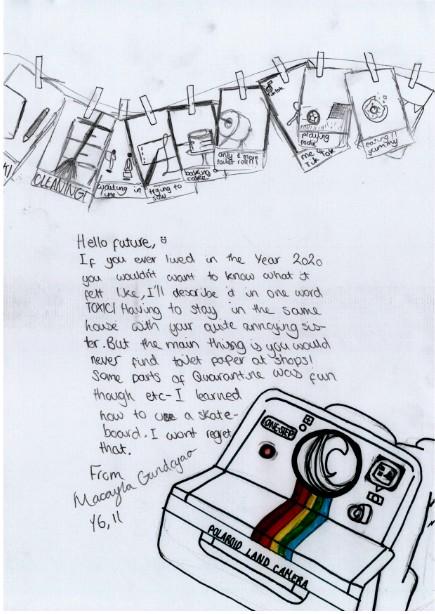
Lockdown Time
Capsule
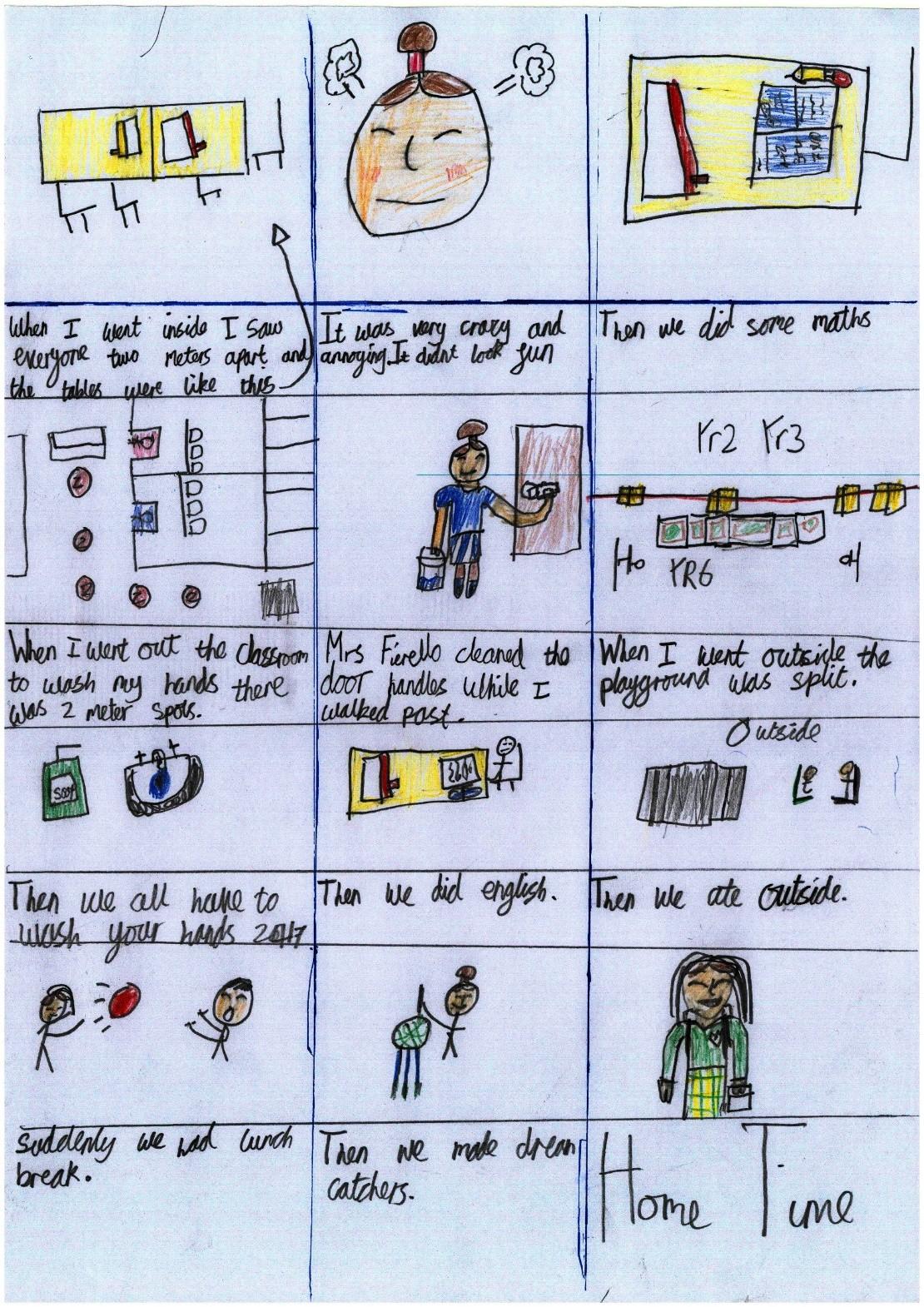















































































 Cross-curricular links
Cross-curricular links


































 Boudicca
Boudicca

































































































































